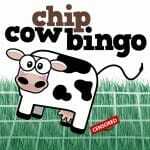Musings of a Pig Farmer
by Larry Sailer
 Last week in “Musings of a Pig Farmer,” I shared how new school lunch regulations are limiting portions of certain types of food offered through the national school lunch program. These regulations are a key component of the Healthy Hunger-Free Kids Act championed by First Lady as part of her “Let’s Move” initiative to help end childhood obesity.
Last week in “Musings of a Pig Farmer,” I shared how new school lunch regulations are limiting portions of certain types of food offered through the national school lunch program. These regulations are a key component of the Healthy Hunger-Free Kids Act championed by First Lady as part of her “Let’s Move” initiative to help end childhood obesity.
One reason given by proponents of the new school lunch rules is the need for children to have a “balanced diet.” Balanced means that a diet meets your nutritional needs while not providing too much of any one nutrient. To achieve a balanced diet, you must eat a variety of foods from each of the food groups.
Given my experience feeding livestock, I understand the need for “nutritionally balanced rations”:
- A balanced ration is one that has all the nutrients the animal needs in the right proportions and amounts.
- A ration is the amount of feed given to an animal to meet its needs during a 24-hour period.
- Animals need proper nutrition to efficiently produce meat, milk, eggs and wool.
Active kids, like active animals, have different nutritional requirements. Performance athletes, like show animals, have different feed needs. That’s why I’m opposed to the federal government’s “one size fits all approach” to school lunches.
Through the years, I’ve learned that you can’t remove everything animals like to eat or they will simply refuse to touch everything in the feeder. They “go off feed.” Animals will not eat enough to grow bigger if they do not like the diet you feed them.
This same concept may be applied to human diets. As a parent and a grandparent, I’ve seen kids simply refuse to eat foods they do not like. For example, Janice and I had a rule that our kids had to at least try the different types of food served at dinner. They couldn’t be excused from the dinner table until they tried everything on their plates. That rule didn’t work for tomatoes – but gagging did! To this day, we have kids who will not eat tomatoes.
Fact is, it doesn’t matter how good the food is for them (animals or humans) if you can’t get them to eat it! It doesn’t matter if the federal government requires school-age children in the Midwest to take a serving of black-eye peas or collard greens. Chances are, most of those foods are going to end up in the garbage disposal. Lean proteins, however, are appealing to many children. By setting a maximum allowance for Meat and Meat Substitutes (verses “minimum requirements” as stated under the former regulations), the U.S. government implies that meat isn’t healthy. There’s also a new limit set for grain servings. New regs, however, increase the amount of fruits and vegetables served. Well, too much fruit isn’t good for you either because there is such a thing as consuming too much natural sugar. Too much of “good thing” is still too much!
























